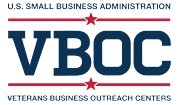5 Steps to Prepare Your Small Business for Disaster
Natural disasters can happen suddenly, causing major disruptions to your business and affecting the whole community. Being prepared is crucial for protecting your employees, keeping your business running, and recovering afterward. The U.S. Small Business Administration (SBA) offers various resources and programs to help businesses develop an emergency plan, access critical resources, and recover from a disaster. Take the following steps to plan ahead and resume operations quickly.
The first step in disaster preparedness is understanding the risks your business might face. Whether you're in an area prone to wildfires or flooding, knowing the potential dangers is key to making a good action plan. The SBA connects you with local resource partners who can help you with this for free. These partners include:
- Veterans Business Outreach Centers (VBOCs): These centers specialize in helping veteran entrepreneurs with business training, counseling, and mentorship.
- Women’s Business Centers (WBCs): WBCs provide resources specifically for women entrepreneurs, including educational tools, counseling, and access to funding.
- Small Business Development Centers (SBDCs): SBDCs offer various support services, such as business planning, market research, and assistance finding capital.
These centers can help you assess your business's risks and create a detailed disaster preparedness plan. To find a partner organization near you, visit SBA Local Assistance.
2.
Use Preparedness Checklists and Ready.gov Resources
The SBA offers Entrepreneurship Training Programs that help individuals plan for emergencies, mitigate risks, and recover financially after a disaster. These programs include:
- Cybersecurity: Learn how to protect your small business from cyberattacks with resources, best practices, training, and awareness from SBA.
- Preparedness Checklists: The SBA Office of Disaster Recovery and Resilience provides resources to help you prepare for hurricanes, wildfires, tornados, and other natural disasters.
Additionally, the U.S. Department of Homeland Security's Ready.gov website offers many resources for disaster preparedness, including toolkits and checklists. These resources cover various potential disasters, from natural events like hurricanes and floods to cybersecurity threats like ransomware.
3.
Check Out SBA Loan Programs
After a disaster, financial help might be needed to recover and rebuild. The SBA offers loan programs to support businesses affected by disasters:
- Economic Injury Disaster Loans (EIDLs): These loans offer financial relief to small businesses in federally declared disaster areas that have suffered significant economic losses. EIDLs provide working capital to help businesses meet their financial obligations and cover operating expenses.
- Military Reservist Economic Injury Disaster Loan (MREIDL) Program: This program helps businesses that face financial difficulties when an essential employee, like the owner, is called to active military duty. MREIDL loans help cover ordinary operating expenses during the employee's absence.
For more information on funding, eligibility, and how to apply, visit the SBA website.
4.
Access SBA’s Disaster Resources
In case of a disaster, it's important to have quick access to SBA resources. Save the contact information for SBA’s Disaster Assistance Customer Service Center:
- Phone: 1-800-659-2955
- Email: disastercustomerservice@sba.gov
For telecommunications relay services, dial 7-1-1. The Disaster Assistance Customer Service Center offers guidance, help with applications, and answers to questions about SBA disaster loans and other resources.
4.
Stay Connected
Staying informed is crucial during and after a disaster. For the latest updates on federally declared disasters and more tips on emergency preparedness, follow the SBA on social media @SBAgov. The Office of Veterans Business Development also shares useful information on platforms like LinkedIn, X, and Facebook.
By using these resources and programs, you can better prepare your business for natural disasters and ensure a faster recovery.
This blog was originally written by the U.S. Small Business Administration’s Office of Veterans Business Development (OVBD). To learn more about OVBD and its offerings, visit sba.gov/ovbd.
For more veteran owned small business resources and helpful tips, follow the SBA’s Office of Veterans Business Development (OVBD) on LinkedIn, X (formerly Twitter), and Facebook.
This blog was originally written by the U.S. Small Business Administration’s Office of Veterans Business Development. To learn more about OVBD visit, sba.gov/ovbd.
